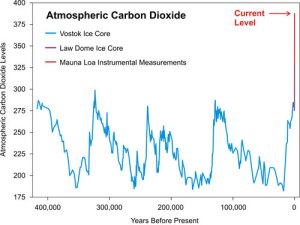Climate scientists are certain that human-caused emissions have increased carbon dioxide in the atmosphere by 44 per cent since the Industrial Revolution. Very few of them dispute that this has already caused average global temperatures to rise roughly 1 degree. Accompanying the warming is disruption to weather patterns, rising sea levels and increased ocean acidity. There is no doubt that further emissions will only make matters worse, possibly much worse. In a nutshell, that is the settled science on human-caused climate change.
What scientists cannot yet pin down is exactly how much warming we will get in the future. They do not know with precision how much a given quantity of emissions will lead to increased concentrations of greenhouse gases in the atmosphere. For climate impact it is the concentrations that matter, not the emissions. Up until now, 29 per cent of human emissions of carbon dioxide has been taken up by the oceans, 28 per cent has been absorbed by plant growth on land, and the remaining 43 per cent has accumulated in the atmosphere. Humans have increased carbon dioxide concentrations in the atmosphere from a pre-industrial level of 280 parts per million to over 400 today, a level not seen for millions of years. Continue reading


 The Athabasca Glacier seen from the access trail. This point is about halfway from the parking lot and the current snout of the glacier, which is about 200 metres away. In the centre background is the ice-fall from the Columbia Icefield. The marker shows where the glacier snout was in 1992, coincidentally the year of the
The Athabasca Glacier seen from the access trail. This point is about halfway from the parking lot and the current snout of the glacier, which is about 200 metres away. In the centre background is the ice-fall from the Columbia Icefield. The marker shows where the glacier snout was in 1992, coincidentally the year of the